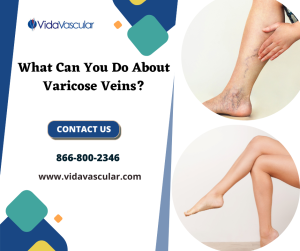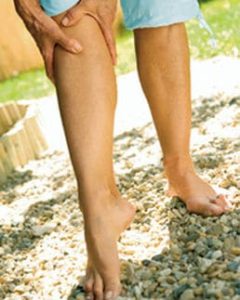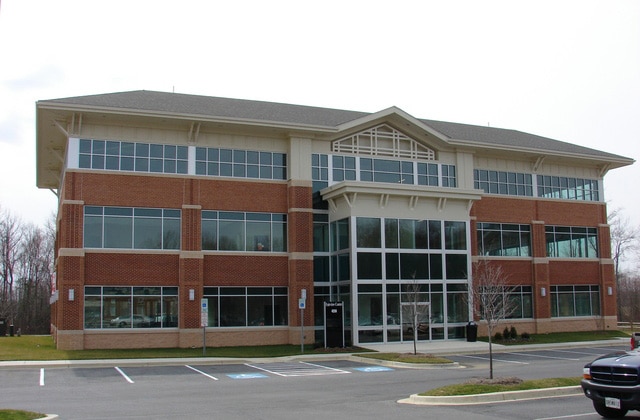Varicose veins – the most common vein disorder – are enlarged, twisted veins that do not move blood
effectively. When the one-way valves in your veins weaken, blood may flow backward and pool in your veins, causing them to become enlarged. Varicose veins usually show up in the legs and feet, because standing and walking increase the pressure on these veins. They look like bulging, bluish cords beneath the surface of your skin. Spider veins are similar to varicose veins, but they are smaller and closer to the surface of your skin. Varicose veins are common, affecting up to 60% of Americans. Women are more likely to have varicose veins than men. In many cases, varicose veins are just a cosmetic problem. But varicose veins can also cause pain and discomfort. In some cases serious complications, such as phlebitis (inflammation of the veins), skin ulcers, and blood clots, can occur.

Symptoms Accompanied by Varicose Veins:
• Prominent dark-blue blood vessels, especially in the legs and feet
• Aching, tender, heavy, or sore legs
• A burning feeling in your lower legs
• Swelling in the ankles or feet, especially after standing
• Breaks in the skin
• Itching around the vein
• Skin ulcers near your ankle – this is serious and requires immediate medical attention
Varicose veins develop when your veins stretch and their valves, which prevent blood from flowing backward, don’t work anymore. Primary varicose veins happen when the walls of your veins become weak. They occur commonly as we age, and also in women during pregnancy.

What Puts You At Risk for Varicose Veins
• Family history – if other members of your family have varicose veins, your risk is greater
• Female – three times more common among women
• Age – veins fail as we age
• Hormonal changes related to pregnancy, premenstrual period, and menopause
• Standing for long periods
• Obesity
• Certain diseases
If you have pain, burning, or sudden swelling associated with varicose veins, you should see your healthcare provider. Your health care provider will do a physical exam of your legs while you are standing. Your doctor also may do tests to see how well your veins are working and to distinguish between primary and secondary varicose veins. Your doctor may also do an ultrasound test to look for blood clots.
In many cases, you can relieve pain from varicose veins on your own. This may involve avoiding long periods of sitting or standing, getting regular exercise, losing weight, elevating your legs periodically, and wearing compression stockings.
Regular exercise helps veins work better. Weight loss and exercise lower the likelihood of getting blood clots.
Surgical and Other Procedures:
• Sclerotherapy –
A doctor injects a solution into a varicose vein that scars and closes the vein, then applies a compression dressing, in order to make the vein disappear.
• Radiofrequency or ablation –
A catheter is threaded into the varicose vein to heat the vein wall, causing the vein to collapse and close.
• Stripping the vein –
Removing the vein through a series of incisions.
A vein specialist at VidaVascular can help you to decide which treatment may be most appropriate for your condition.
To schedule a free screening for this and other conditions at a Vida Vascular office in northern Virginia (convenient to Springfield, Fairfax, Alexandria, Arlington, Woodbridge), Maryland (convenient to National Harbor, Oxon Hill, Waldorf, La Plata, and Clinton), and Washington DC.
Call Us!: 866-800-2346
Visit Us: https://www.vidavascular.com/vascular-center/





